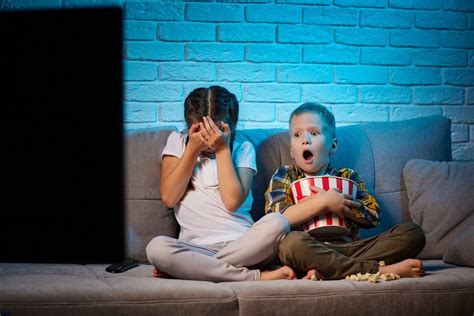Exposure to violence on television has long been a topic of concern, especially when it comes to its effects on children. We all know that kids are like sponges, absorbing everything they see and hear. But what happens when what they soak up includes scenes of aggression and harm?
“Although past evidence showing causal links between modelling and getting rewarded for violence had an immediate impact on aggressive behavior in 4-year-old children, few studies have investigated long-term risks with antisocial behavior.”
This quote sets the stage for a deeper dive into the influence of violent TV content on young minds. Dr. Linda Pagani, a researcher at the Centre de recherche Azrieli du CHU Sainte-Justine, sheds light on the importance of studying this issue.
In a groundbreaking study, Pagani and her team delved into the long-term repercussions of early exposure to violent TV shows in children. The research focused on nearly 2,000 boys and girls from Quebec born in 1997-1998 who were part of the Quebec Longitudinal Study of Child Development.
Parents reported their child’s exposure to violent television content at ages 3.5 and 4.5 years old. Fast forward to age 15, where the now teenagers self-reported various aspects of antisocial behavior.
But what exactly qualifies as “screen violence”? According to the study, it encompasses physical aggression, verbal aggression, and relational aggression that depict situations causing harm intentionally or unintentionally.
“Children are attracted to fast-paced, stimulating violent content, which often features appealing characters like superheroes who commit and are rewarded for aggressive acts.”
The allure of such content lies in its fast pace and engaging characters – traits that captivate young audiences but also normalize aggressive behaviors through positive reinforcement.
The findings revealed a stark contrast between boys and girls regarding the impact of early exposure to violent media content. While boys showed increased antisocial behavior as a result of preschool televiewing habits, girls did not exhibit significant changes.
Pagani emphasized the gravity of their discoveries by stating that early childhood exposure to media violence can lead to serious and lasting consequences for boys specifically. This underlines the crucial need for public health initiatives aimed at educating parents about these risks.
“Our study provides compelling evidence that early childhood exposure to media violence can have serious, long-lasting consequences…”
Moreover, she highlighted how parents and communities play pivotal roles in mitigating future issues by actively monitoring children’s media consumption habits.
This study serves as a poignant reminder that what children watch can shape their beliefs, attitudes, and actions well into adolescence and beyond. It prompts us all to reflect on the type of content we expose our young ones to – understanding that our choices today can profoundly impact their tomorrow.









Leave feedback about this